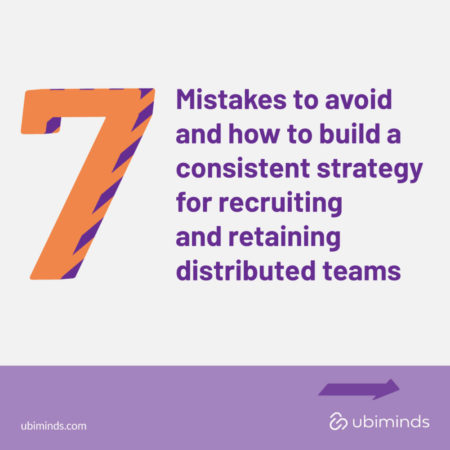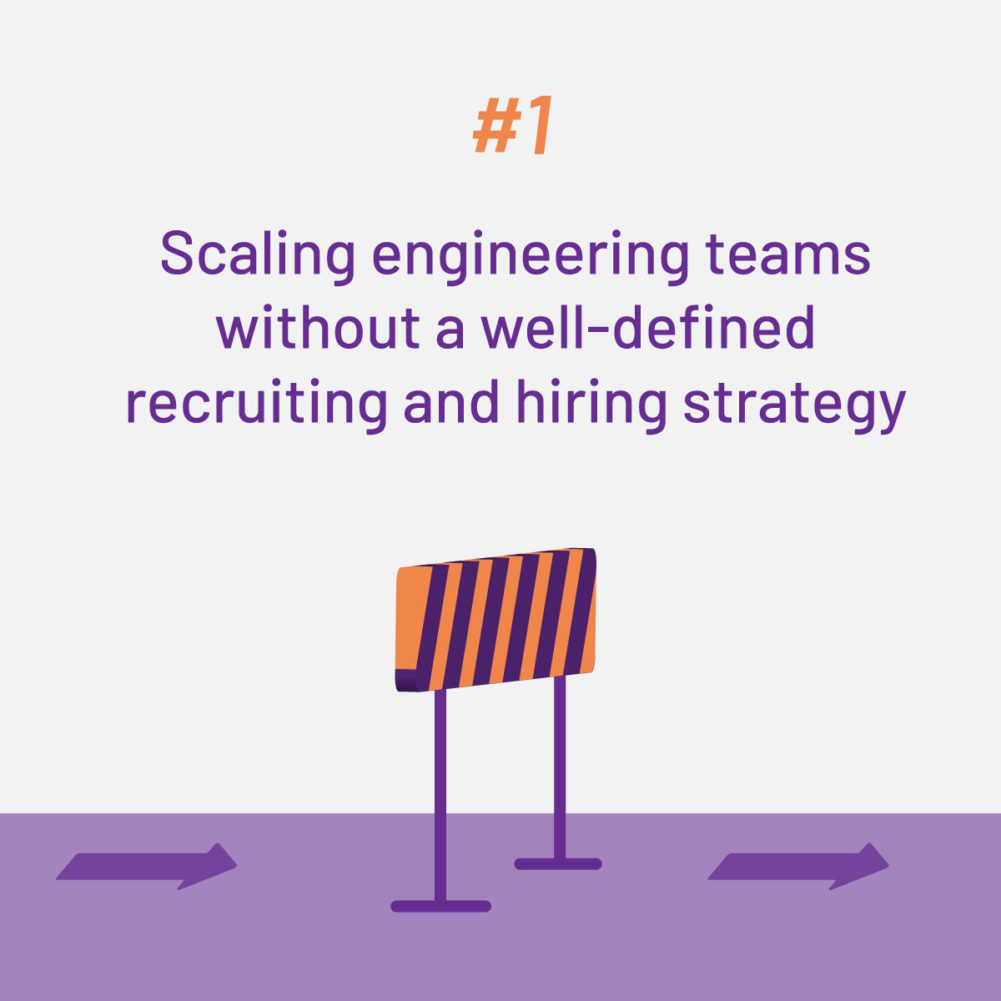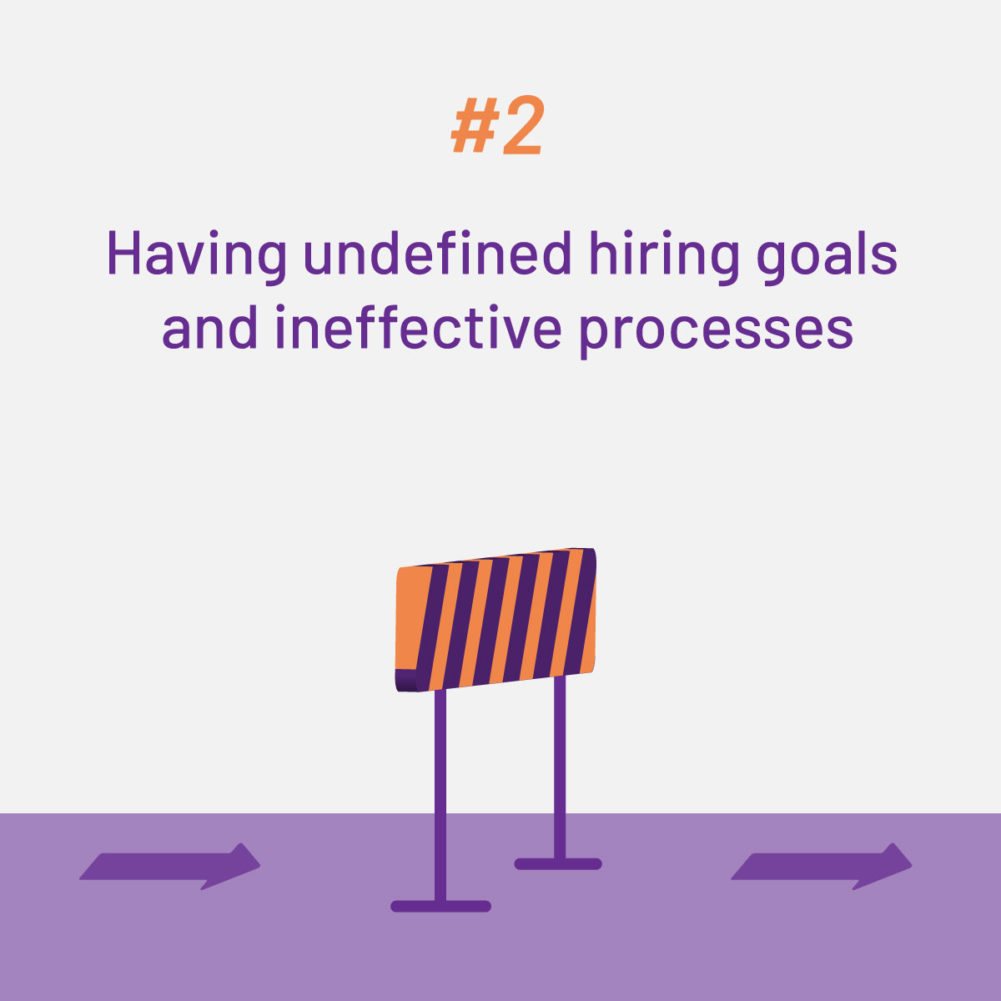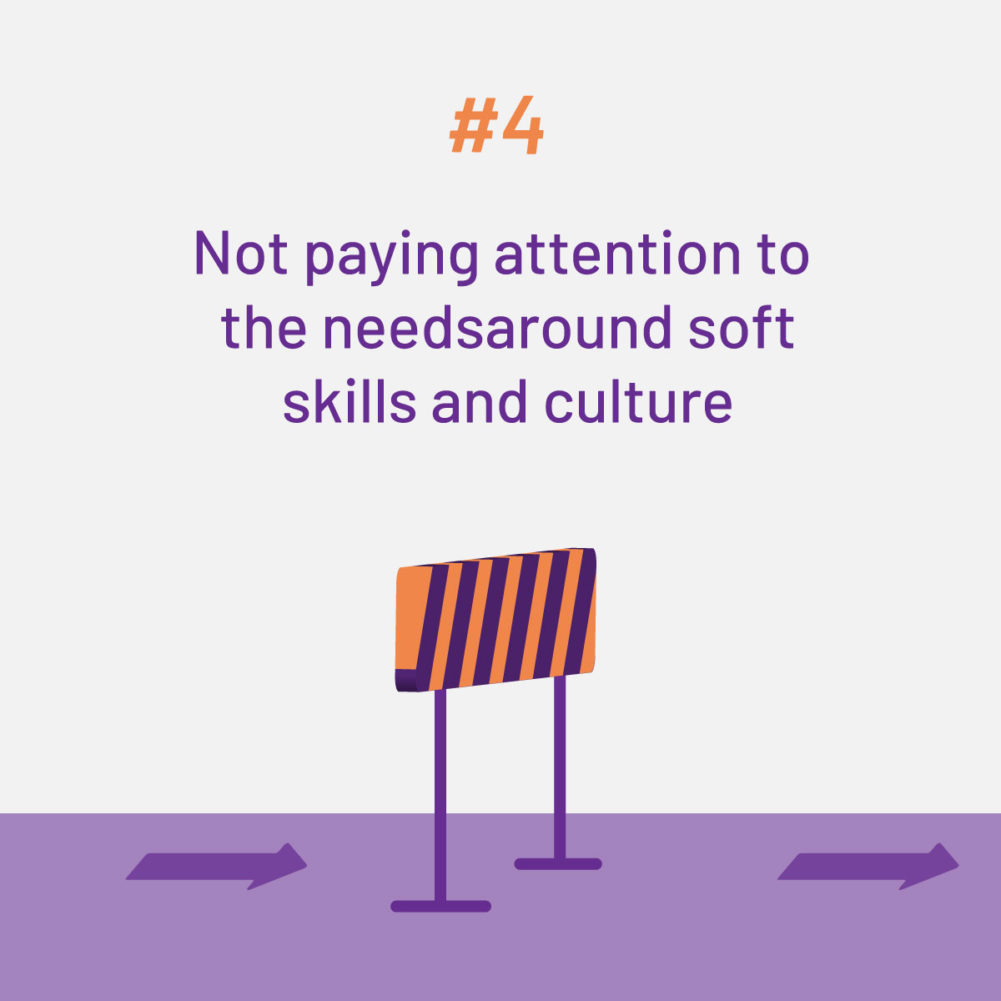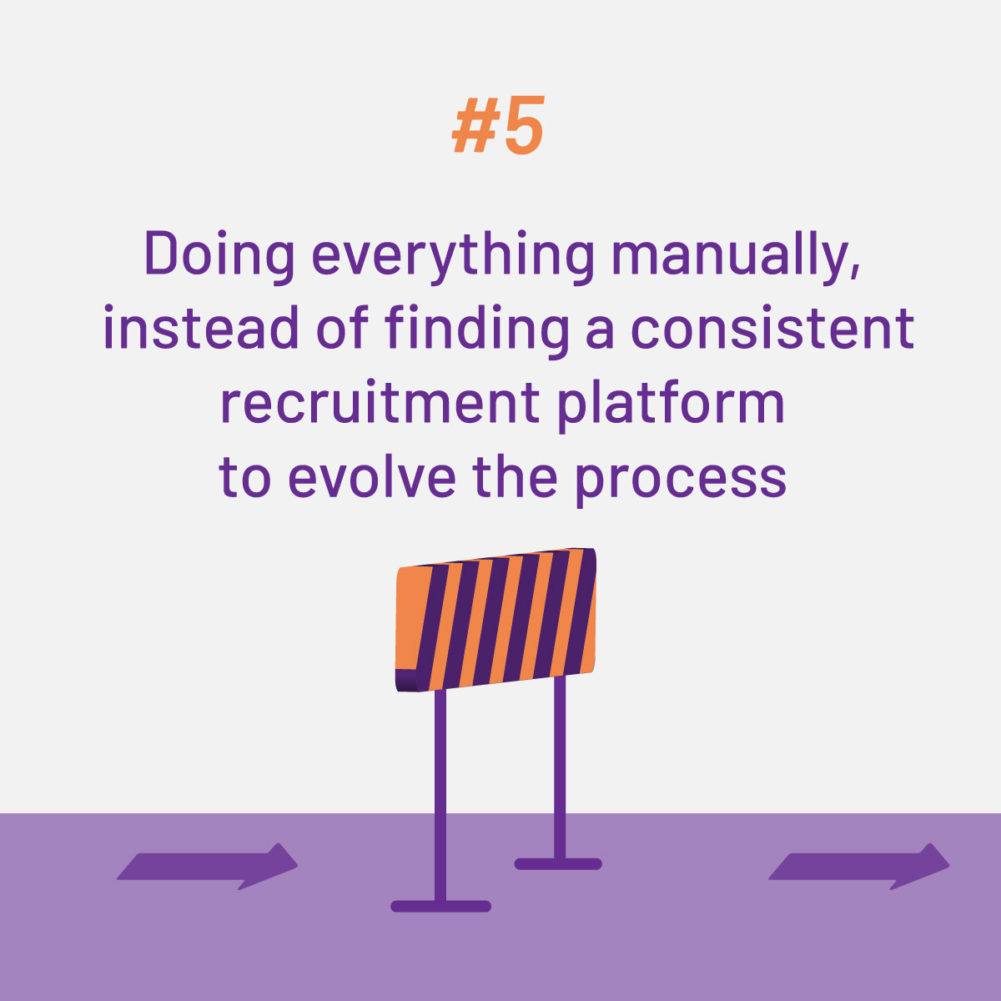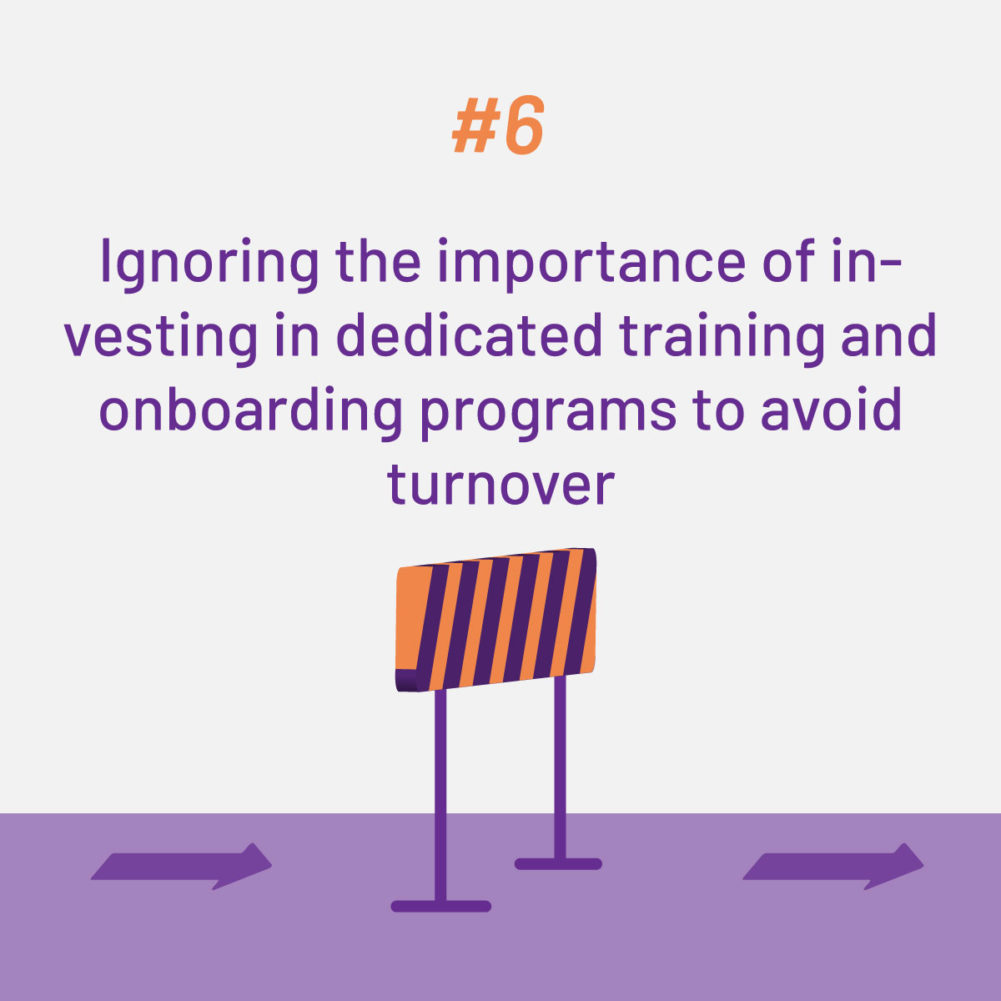At some point in your career as a manager leading a technology company, you will come across the following question: is it (or is it not) time to scale the product engineering team? But the growth is a long and complicated process. The truth is that scaling high performing engineering team isn’t always as easy as it should be. Instead, is a lot of work. Finding the right hires, keeping team culture intact, and fostering collaboration are just some of the aspects that deserve attention in your organization. Read on to learn how to proceed and get value for your business.
Why do companies, teams, and products focus on scalability? Well, it is clear that growth is good for any business, but not everyone is prepared to face the impacts of that growth, which can be varied: from reviewing manual processes and changing architectures, to becoming fully automated and more efficient to improve cost base. If you want to address the challenges around restructuring teams, but also avoid the most common mistakes when scaling high-performing Engineering Teams, keep reading this page!
1st Scaling engineering teams without a well-defined recruiting and hiring strategy
Growing up fast is easy, the hardest thing is to scale engineering organizations based on a reliable and autonomous team, which is able to go all together in the same direction and make decisions aligned to your product value. On the other hand, it is not because the competition for engineers is fierce that you will lower the level of your hiring. On the contrary, you need to look at the neighbor’s terrain and see what is good there in terms of talents.
According to West Monroe, 59% of employees would be willing to leave their current job if a more appealing offer came their way, even though they aren’t actively looking for another job. Another survey from Stack Overflow found that almost three-fourths of developers are open to new opportunities. That statistic includes much of the 85% of developers who aren’t looking for work.
That’s why you need to avoid the mistake of disregarding developers already employed during your hunting process. So if scale product engineering is your goal, keep the hiring bar always high and focus on spending time to build a strategic plan of tech recruitment is mandatory. From the kickoff meeting or writing an attractive job description to conduct an interview able to check if someone is good enough for the job and has your company cultural fit – everything must be well discussed and planned.
Read more about How to Build an Effective Tech Recruitment process.
2nd Having undefined hiring goals and ineffective processes
Without a goal, we should never even start any candidate conversation. Is your target to become the leader of a segment or are you a pioneer and need to gain awareness? Have you defined in detail what kind of engineer you are sourcing?
List a couple of important questions before starting the hiring process. Then use your defined recruitment goals as a guide as you communicate with potential employees. It’s essential to keep the lines of communication open even if you don’t have a current job opening. Building a talent pipeline means communicating with potential employees so that you have multiple options as soon a position opens up.
And finally, calculate your current cost-per-hire, time-to-fill, quality-per-hire, and turnover rate. Also, appoint and track a shortlist of key performance indicators (KPIs) that will drive your scaling product engineering goal forward. Always try to be undeviating, using specific, measurable, achievable, and relevant data to understand what’s possible and show the company when a request is unrealistic for scale product engineering.
3rd Forgetting about candidate experience
Hiring great engineers is about attracting them by communicating how your company can contribute to their careers, how your products make a difference in the society or community. At the end of the day, people need to find a purpose and identify with your company’s values. A good strategy to win the attention of your candidate and convince the candidate to join your team is using your brand as social proof, but more than that: using your hiring process to prove your commitment to the company speech.
For instance: if you mentioned that the company values people’s time and attention, its interview with the candidate must be as productive as possible and demonstrate a valuable exchange of knowledge between the parties capable of motivating the candidate to want to know more about his team. So, do a checklist for delivering a great experience for your candidate, including items as:
- Write clear and concise job descriptions
- Make it easy for candidates to find and apply for your jobs
- Communicate with candidates early and often
- Brief candidates with instructions before an interview
- Don’t ghost unsuccessful candidates
4th Not paying attention to the needs around soft skills and culture
Ensuring the technical qualification of your candidate is very important. But a big mistake made by most managers is forgetting to evaluate the soft skills and cultural fit of the future engineer.
In 2015, a corporate study found that soft skills were worth 88 billion pounds annually to the United Kingdom. The study noted that 77% of employers deemed these skills just as important as hard skills to the success of their businesses, and 16% found them more important. The skills cited were:
- Communication and interpersonal skills
- Teamwork
- Time and self-management
- Decision-making and initiative-taking
- Taking responsibility
In addition, looking for diversity and character—and by maintaining your standards should be one of your most valued goals during your mission of Scaling high performing Engineering Teams. In this context, nearshoring recruitment strategy can be a great option to scale engineering teams quickly and without losing quality.
5th Doing everything manually, instead of finding a consistent recruitment platform to evolve the process
When we talk about scale product engineering we talk about improving processes and as far as possible automate them. So, to spin up your new hires effectively you’ll need to build a consistent recruitment platform.
Research shows that recruiting platforms like recruitment CRMs, Business or Talent Intelligence Systems can be really effective to support companies in the hiring process. For instance, Yello, which is a CRM to schedule automation, video interviewing, employee referrals or Beamery, a London-based startup that offers self-styled recruitment marketing software targeted at fast-growing companies.
The advantages of using software to evolve the recruitment processes are:
- Build workflows to automating actions in your pipeline (schedule emails, meetings, overdue candidates reminders, etc)
- Optimize and standardize processes, to save time such as sending questionnaires and evaluation forms or administrative tasks
- Monitoring results, track applicants through meetings and hiring process, or examine database records with ease
If you want to be free from time-consuming recruiting activities and invest resources (and energy!) doing what really matters, you should think about finding a great platform. It makes sense to use them in all sorts of domains where you need speed and attention to detail.
6th Ignoring the importance of investing in dedicated training and onboarding programs to avoid turnover
Not having a consistent process of onboarding after the hiring, will make you become your strategy for scale engineering teams in a failure. You invested a lot of time screening and hiring the best talents for your team. This is the biggest reason not to risk losing your talent in the first months of work. Research shows that nearly one-third of new hires start looking for a new job within their first six months.
A poor onboarding experience can lead to increased costs and lower value from new hires. Also increases the likelihood of employee turnover, which is known to be one of the largest variable costs for a business. Harvard Business Review notes that the organizational costs of employee turnover are estimated to range between 100% and 300% of the replaced employee’s salary.
According to surveys, organizations with a standard integration process experience 54% higher productivity from new hires. Onboarding officially starts when your candidate signs the offer letter. The 2-3 week window between offer acceptance and the start date presents a crucial engagement opportunity. Make the most of it!
So by preparing the onboarding before the engineer’s first day, you indicate that you invested time, and make him/her feel valued. Onboarding is about giving useful information to the new employee. That’s why a good starting point is to do a doc with topics to cover and tasks to complete (remember: your goal is scale product engineering). This is really useful, especially on remote work. Other tips for building your onboarding are:
- Separate the onboarding in a schedule of days or weeks
- Schedule some time for the new employee to meet with key people and departments on their first day
- Allow plenty of time for training which should cover company rules, processes, procedures, and expectations.
- Take the engineer through the complete dev process
- Equip him/her with the knowledge and tools they need to do the job
7th Forgetting the engineer in the same role, instead of creating supported paths for mobility and learning
The engineer’s mobility also contributes to scaling the organization and performance. If you really want to scale an engineering team, you should be able to encourage them by creating supported paths for mobility and learning in the company.
To do that is much easier if you organize your product development function into smaller teams, aligned to specific features or product areas. With this structure, the engineers can operate as cross-functional squads and roles as product managers, front-ends, back-ends, quality analysis, or technical operations.
You also can work with distributed engineering teams, which will allow you to reduce costs, boost productivity and reduce attrition rates. In the distributed framework, the teams work with the software development cycle, also known as SDLC (Software Development Life Cycle) – a roadmap that allows to the management of different projects of different scales and complexity.
This is perfect to give engineers new opportunities in the company, at the same time the product gathers different and complementary skills which are necessary to perform all the activities. A good practice is to discuss new attributions and compensation to match with the engineer’s expectations.
A great idea to define engineers’ careers at the same time you scale engineering production and teams are to create skills journeys (Code contributions, Effectiveness, Technical design, Communication, and Culture) according to the products that the company should develop.
Extra tip: don’t forget to consider Feedback as an important step or don’t execute it correctly
Base your decisions on changing roles or improve a project process on your team’s feedback. It’s a very basic tip, but very important because exchanging feedback helps you to improve processes and shows a quicker way to prioritize things.
At the end of the day, your mission as a leader in a tech company is to constantly encourage everyone to challenge themselves to improve quality by scale product engineering well.
You can use your own methods, such as running retrospectives and reporting. But mentoring and giving feedback is mandatory and the proven way to move forward.
Want to know more about scaling your own team? Drop us a line.

International Marketing Leader, specialized in tech. Proud to have built marketing and business generation structures for some of the fastest-growing SaaS companies on both sides of the Atlantic (UK, DACH, Iberia, LatAm, and NorthAm). Big fan of motherhood, world music, marketing, and backpacking. A little bit nerdy too!

